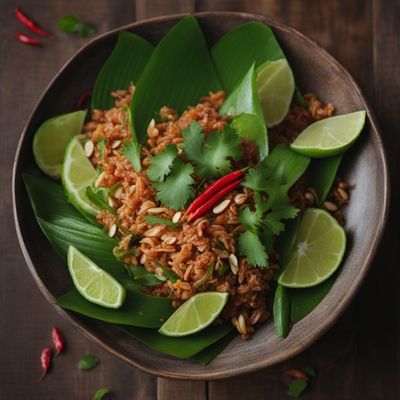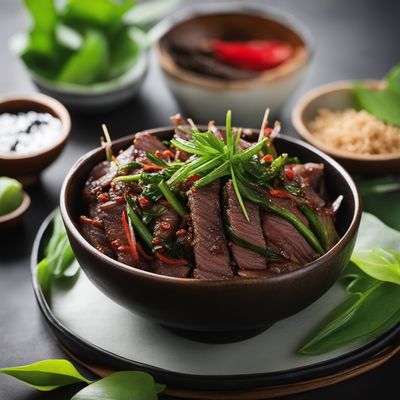
Ingredient
Wild betel leaves
"The Aromatic Delight: Exploring the World of Wild Betel Leaves"
Wild betel leaves are heart-shaped, glossy, and vibrant green in color. They have a distinct aroma and a slightly bitter taste, with hints of pepper and mint. The leaves are tender and delicate, yet possess a crisp texture that adds a refreshing element to dishes.
Origins and history
Wild betel leaves are native to Southeast Asia and have been used for centuries in traditional medicine and culinary practices. They hold cultural significance in countries like Thailand, Malaysia, and Indonesia, where they are often used in religious ceremonies and as a symbol of hospitality.
Nutritional information
Wild betel leaves are a good source of vitamins A and C, as well as antioxidants. They are low in calories and contain essential minerals like calcium and iron.
Allergens
There are no known allergens associated with wild betel leaves.
How to select
When selecting wild betel leaves, look for fresh, vibrant green leaves without any signs of wilting or discoloration. Choose leaves that are pliable and free from blemishes or tears.
Storage recommendations
To maintain the freshness of wild betel leaves, store them in a plastic bag or airtight container in the refrigerator. They can stay fresh for up to a week.
How to produce
Wild betel leaves can be grown in a well-drained soil with partial shade. They require regular watering and can be propagated through stem cuttings or seeds.
Preparation tips
Wild betel leaves are commonly used as a wrap for various fillings, such as minced meat, seafood, or vegetables. They can also be used in salads, soups, or stir-fries to add a unique flavor. Before using, rinse the leaves thoroughly and pat them dry. Remove the tough stem before incorporating them into dishes.
Culinary uses
Wild betel leaves are widely used in Southeast Asian cuisines, particularly in dishes like Miang Kham (a traditional Thai snack), Nasi Ulam (Malaysian herb rice), and Otak-Otak (Indonesian grilled fish cake). They are also used as a garnish or flavoring agent in salads, curries, and soups.
Availability
Wild betel leaves are commonly available in Southeast Asian countries like Thailand, Malaysia, Indonesia, and Vietnam.





